Bali is captivating and unique. Its culture and its landscapes form part of the attraction, of course, but no place on the island is more telling of its rich heritage than any one of its religious sites.
The only Hindu-majority island in Indonesia, Bali’s Hindu temples have developed in isolation over the centuries, resulting in distinctive architecture featuring compounds, towers, alluring gates, and even birthing a UNESCO-recognised irrigation system.
They protect the sea, venerate mountains, and provide idyllic spots for prayer and contemplation.
Table of Contents
10 Best Temples in Bali
Pura Besakih
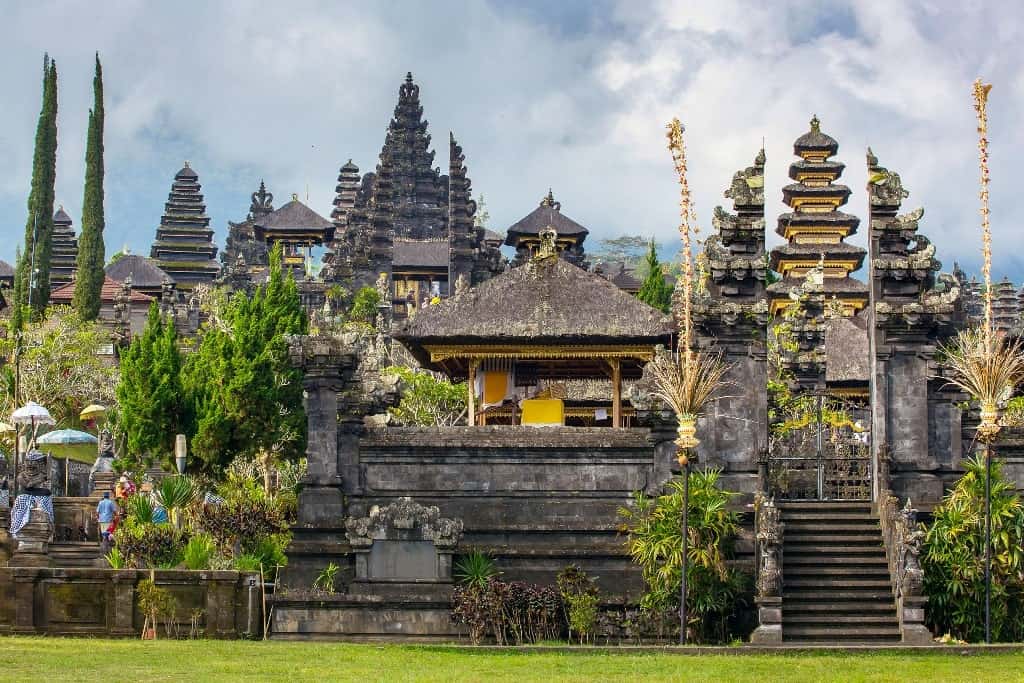
Situated 1,000 meters up on the western slopes of Mount Agung, Pura Besakih is often considered the “mother temple” of Bali. The enormous temple complex actually encompasses 23 separate temples, of which the largest and most sacred of all is the Pura Penataran Agung.
This towering temple, complete with its split getaway or candi bentar, is built across six levels on the slopes of the volcano. It’s so sacred to Balinese beliefs that tourists are not allowed inside.
The origins of the whole temple complex of Pura Besakih are unknown and shrouded in myth. What is known, however, is that the stone that sits at the base of the main temple (Pura Pentaran Agung), dates back to at least 2,000 years ago and has similarities with megalithic stepped pyramids.
It was known as a Hindu place of worship at least as far back as when the first Javanese invaders arrived in Bali in 1284. In the 15th century, Besakih became the state temple for the Gelgel dynasty, at one time the most powerful in all of Bali.
Though affected by earthquakes over the centuries, some of which have left their mark to this day, Pura Besakih escaped destruction and remains Bali’s most important place of worship.
Pura Uluwatu
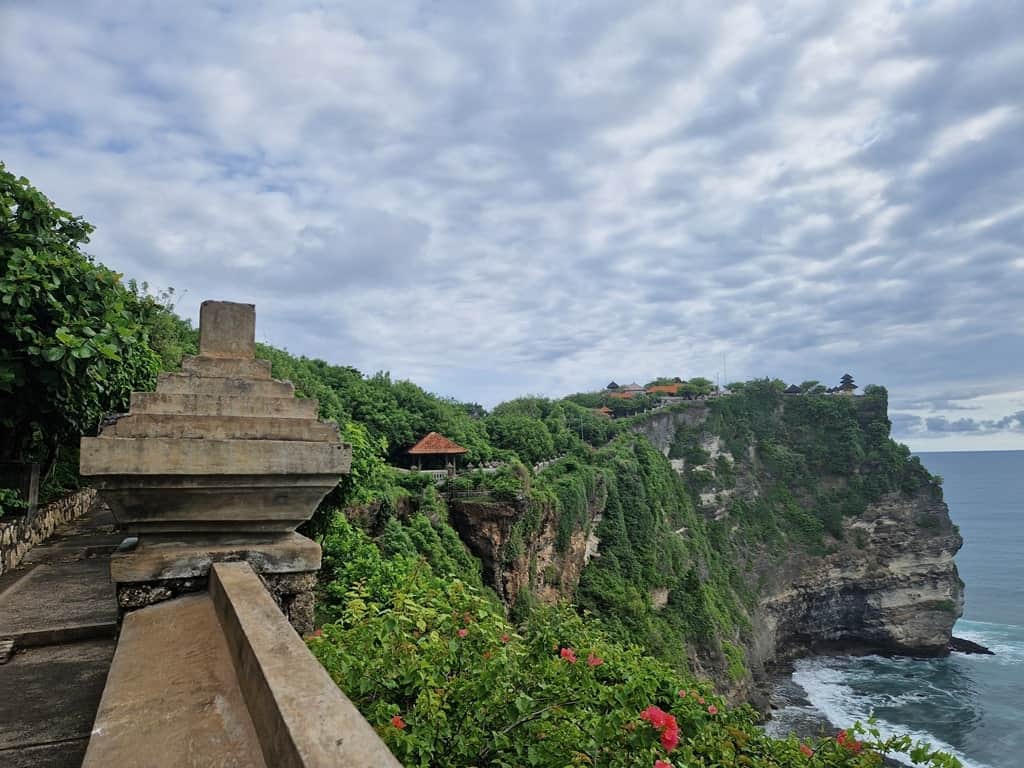
Known in full as Pura Luhur Uluwatu, this picturesque temple is one of Bali’s pura segara or “sea temples.” These types of temples were founded in the 16th century by Dang Hyang Nirartha, a Majapahit priest, and are intended to honor the gods of the sea. They actually form a chain around Bali’s coast, and tradition holds that each one is visible from the next.
Sea temples also play a role during melasti, the ritual purification ceremony held over the three days preceding Nyepi (Balinese New Year). Seawater is used during the purification, which also includes elaborate processions.
Located in Badung Regency, Uluwatu temple is dedicated to Sang Hyang Widhi Wasa, the supreme god of Balinese Hinduism. Built dramatically perched on a clifftop setting 70 meters above the sea, from where there is a sheer drop to the waves below, the temple is said to date back over 1,000 years but was expanded in the 11th century.
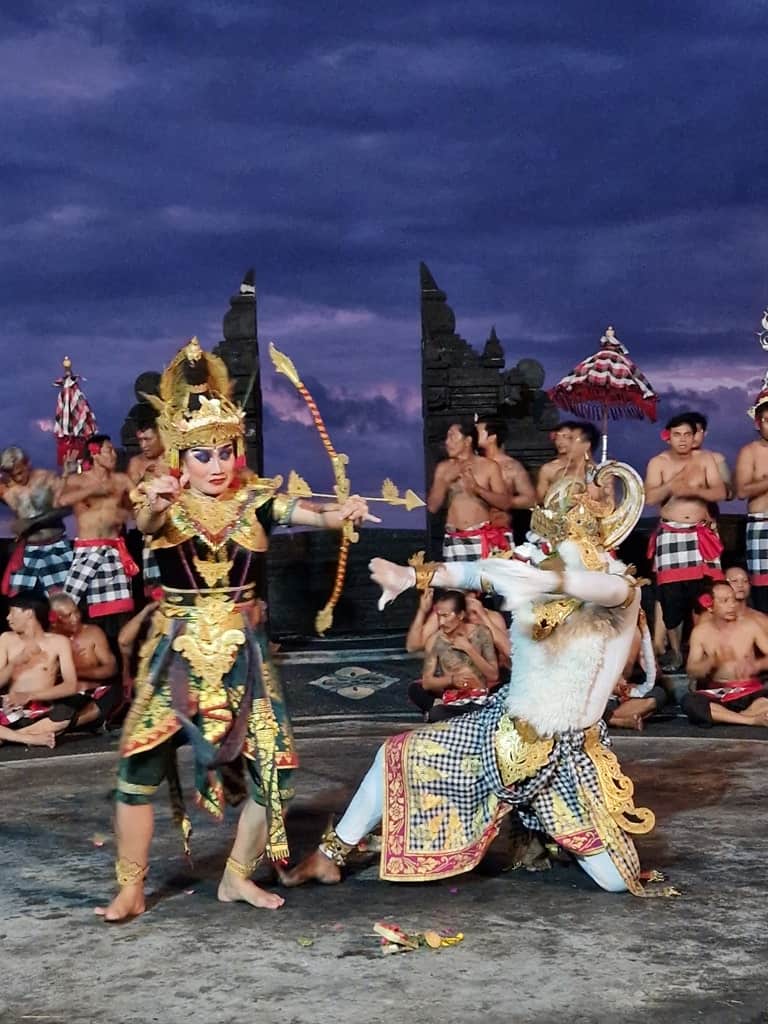
Visiting here means entering through a stone archway, overseen by statues of Ganesha, into a compound walled in by bricks made of coral, all carved with figures from Bali’s pantheon of mythology.
The inner temple at Uluwatu is accessible only to Hindu worshippers, but the temple grounds are famed for the popular Kecak dance that is performed here at sunset. Beware: there are a lot of monkeys that live here, and they enjoy snatching all manner of items from temple-goers.
Pura Lempuyang Luhur
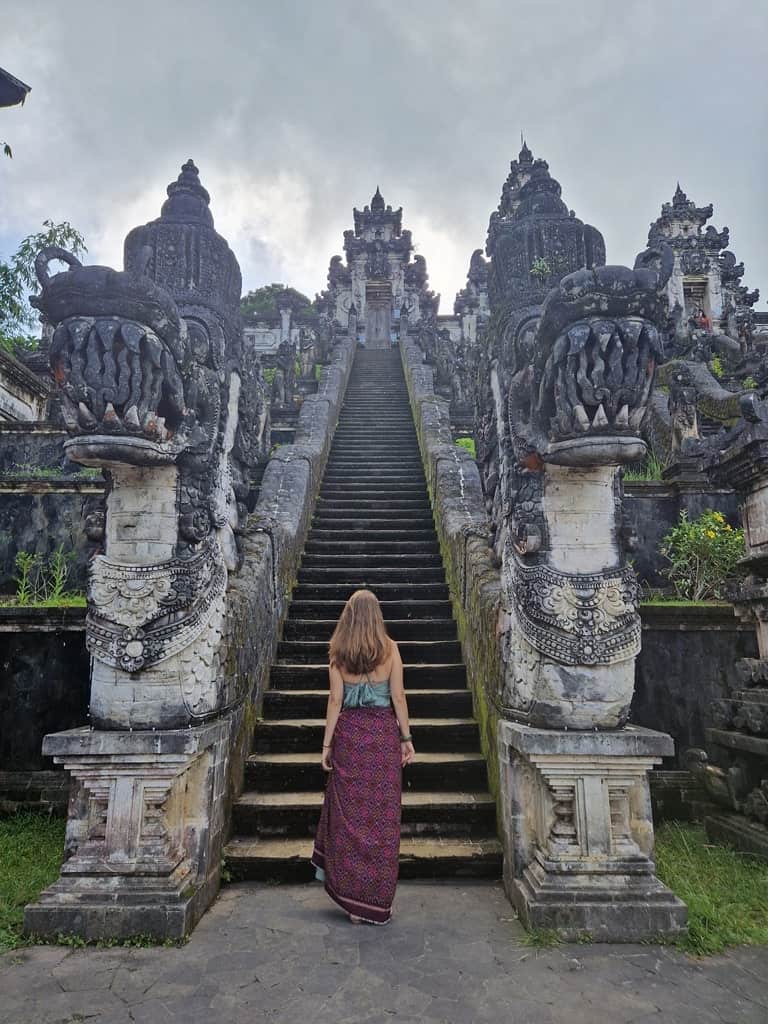
Another of the most important temples in Bali is Pura Lempuyang Luhur, near the summit of the mist-shrouded Gunung Lempuyang. It’s often called “The Temple of 1,000 Steps” — that’s because there are around 1,700 steps that weave their way through the thick Balinese jungle up to the holy temple complex itself.
There are seven temples in total that make up the wider Pura Lempuyang Luhur area, the main one of which sits at 1,175 meters above sea level. The whole complex is dedicated to Ishvara, who is often considered an aspect of the deity Shiva, and the guardian of the east (directions play an important role in Balinese Hinduism).
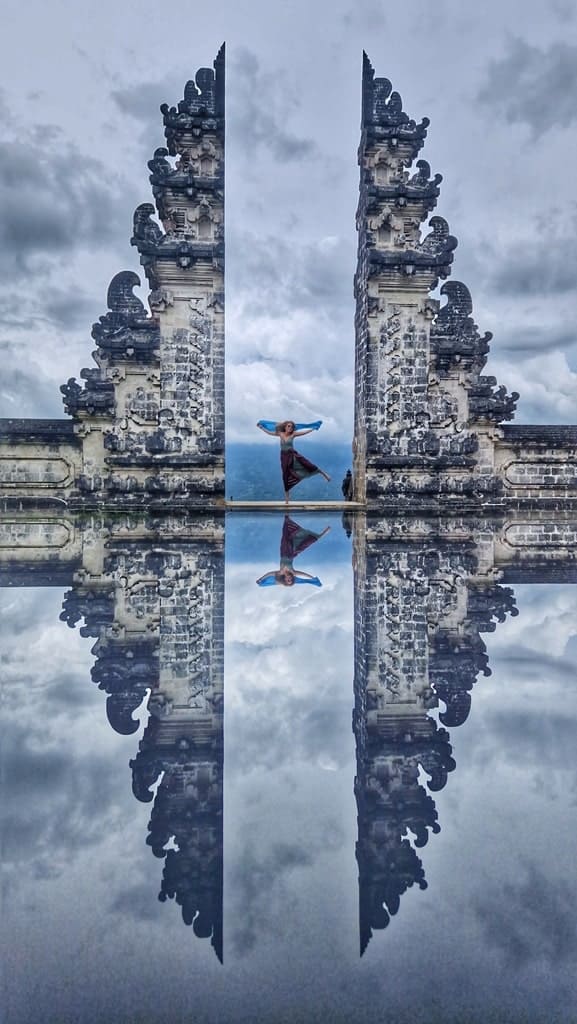
Worshippers visit this holy temple in order to cure illnesses, gain power, and help with domestic problems.
It’s best to visit this complex earlier in the day, as the crowds are fewer, and the heat is yet to permeate the air. The main temple at the top here has a gleaming white candi bentar, through which you can expect incredible views of Mount Agung to the west as a reward for climbing the myriad steps to reach it. Note that the wait for photo opportunities here can be up to three hours long.
Pura Luhur Batukaru
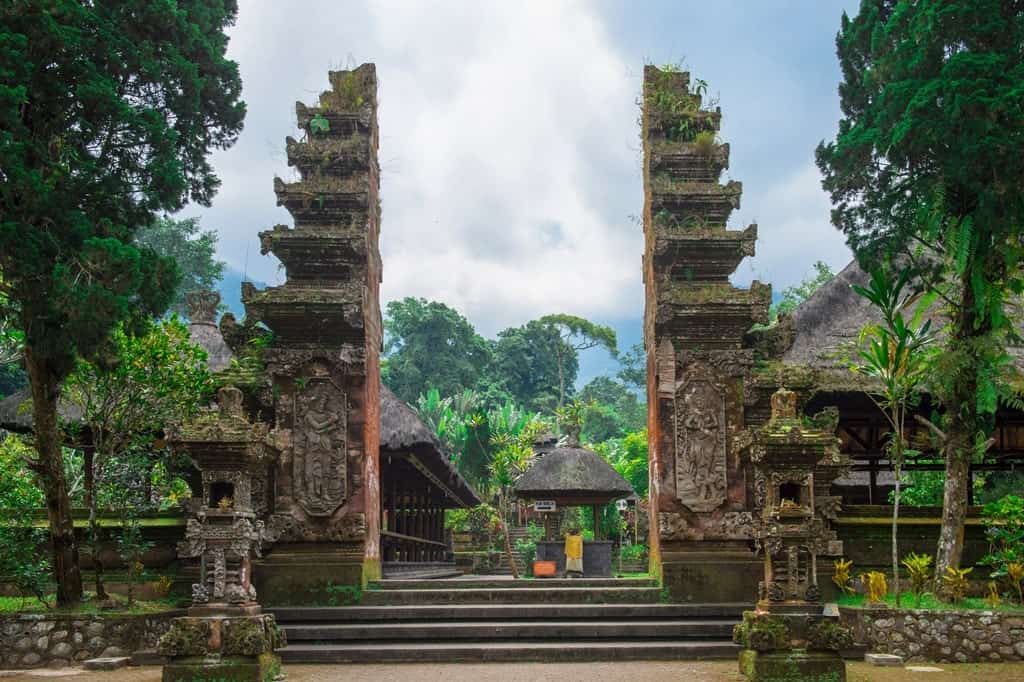
The 11th-century Pura Luhur Batukaru is one of Bali’s nine kayangan jagat — directional temples intended to protect the island from evil spirits. The temple takes its name from Mount Batukaru, Bali’s second-highest volcano, on which the temple sits.
Sadly, the temple was destroyed in 1604 but was carefully rebuilt in 1959. It’s home to a highly important meru, tiered towers that resemble pagodas, which are dedicated to Mahadewa, who is the deity associated with Mount Batukaru.
Pura Luhur Batukaru is a particularly important place of worship for many people in Bali; because of this, much of the temple complex is off-limits for visitors, particularly when there are important events and ceremonies happening.
This temple also forms the starting point for the hike up to the summit of Mount Batukaru. These treks typically start at dawn, but often people do the hike overnight to enjoy the sunrise from the summit instead.
Pura Goa Lawah
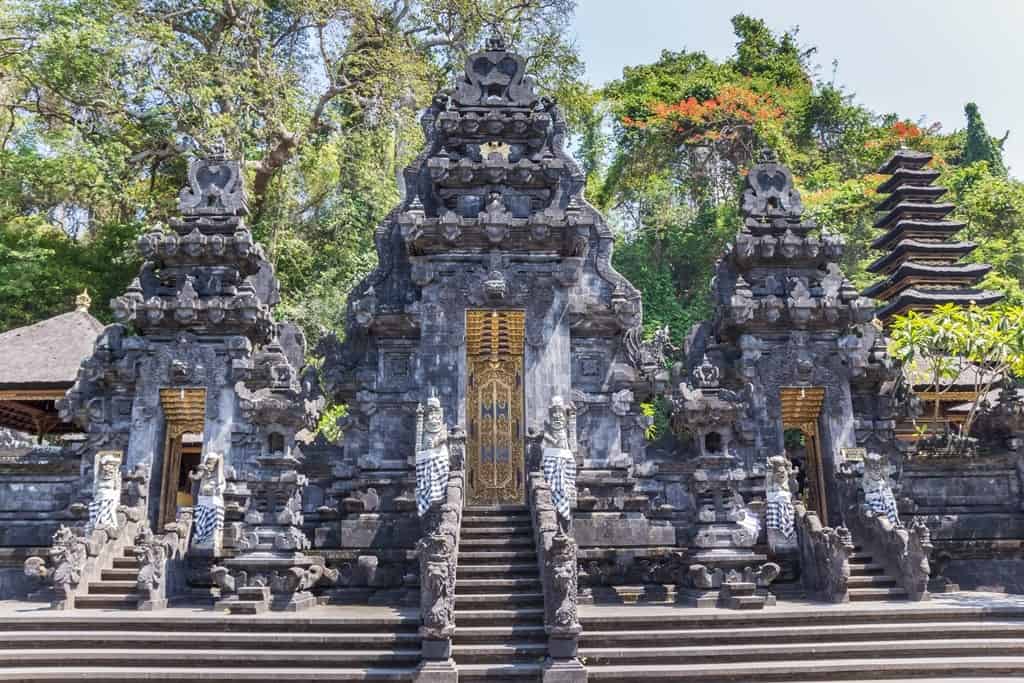
Another of the six holiest sanctuaries in Bali, Pura Goa Lawah, is located in Klungkung Regency in the east of the island. It may not be the largest or most beautiful of Bali’s Hindu temples, but it holds great significance for the population of the island.
Known also as “The Bat Cave,” exploring this sacred site is like entering into another realm. The dark interior of the temple is marked by a small split gateway, where sacred yellow umbrellas mark the holy altars.
Inside there are countless bats, more than you ever imagine — so many, in fact, that the walls themselves look like they’re moving (be warned: the bat colony produces quite a pungent smell). Interestingly, the bats here are also said to feed the deity Naga Basuki, a giant snake who according to mythology, dwells in the cave.
It’s believed that the cave leads to a tunnel that runs for 30 kilometers all the way to Pura Besakih. But this is yet to be proven, and not a good idea to try it out for yourself.
Pura Tirta Empul
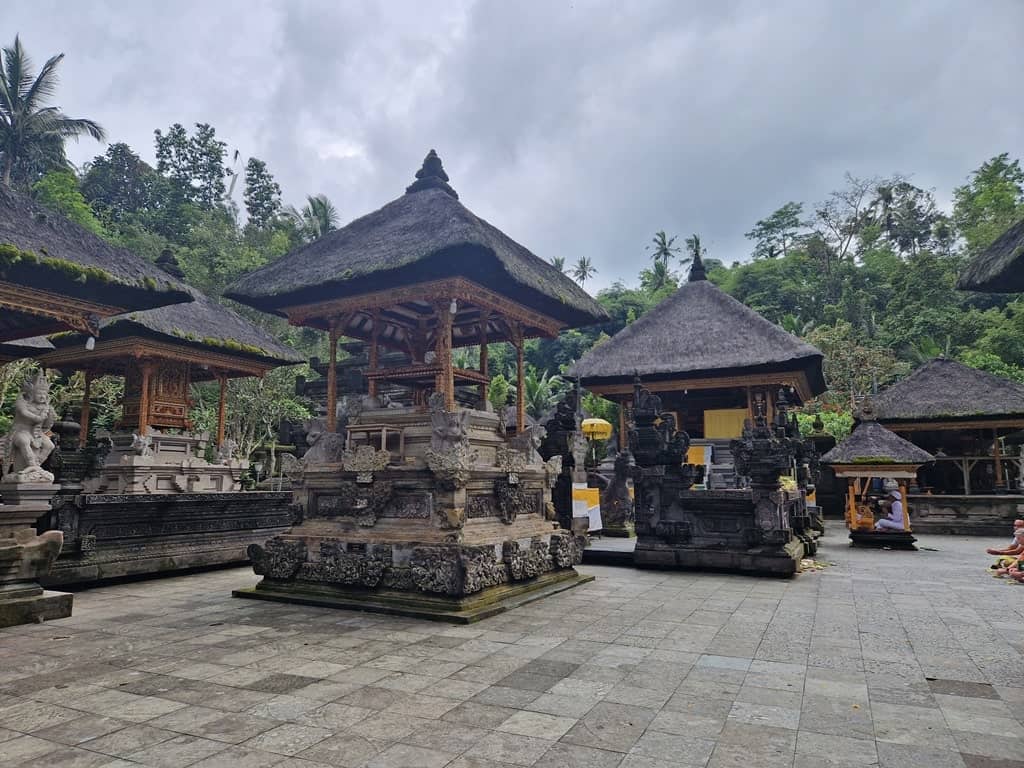
Pura Tirta Empul, located close to the central Balinese town of Tampaksiring, is one of Bali’s pura tirta or water temples. These temples are not only holy but also functional, being home to petirtaan or sacred bathing facilities and having the authority to manage subak — a unique Balinese irrigation system dating back to the 9th century — for the surrounding area.
Tirta means “water,” and empul means “spring” the spring around which Pura Tirta Empul is built was first discovered in 962 and remains a holy place to this day. The temple has two large petirtaan, with holy springs that gush from 30 showers into them; people flock from miles around to bathe in these communal pools.
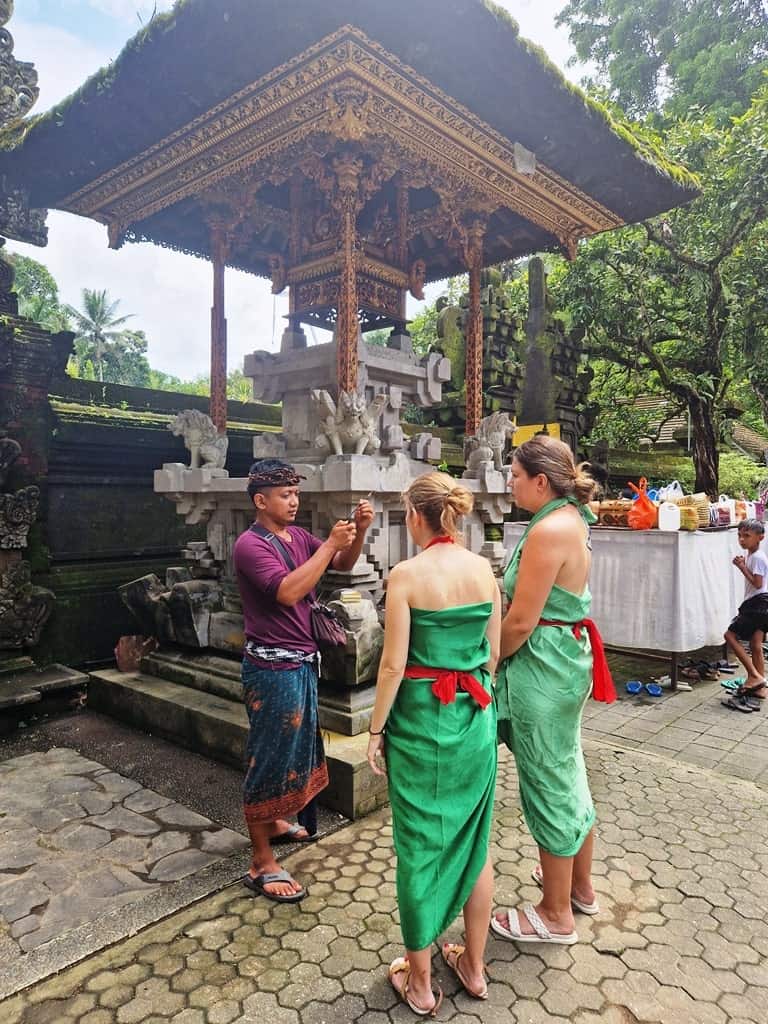
Visitors who want to bathe in the pools are required to wear one of the temple’s sarongs. If you want to take part, too, it’s a good idea to get a guide who will run you through the procedure and offer more insight into the history and meaning behind the temple.
It’s a particularly scenic spot, with the classic aesthetics of Balinese Hindu temples mingling with the gushing water and a backdrop of lush, green surroundings. The temple is dedicated to Vishnu and overlooks not only lush rice paddies but also the Presidential Retreat, which was built in the 1950s for Sukarno.
Pura Ulun Danu Bratan
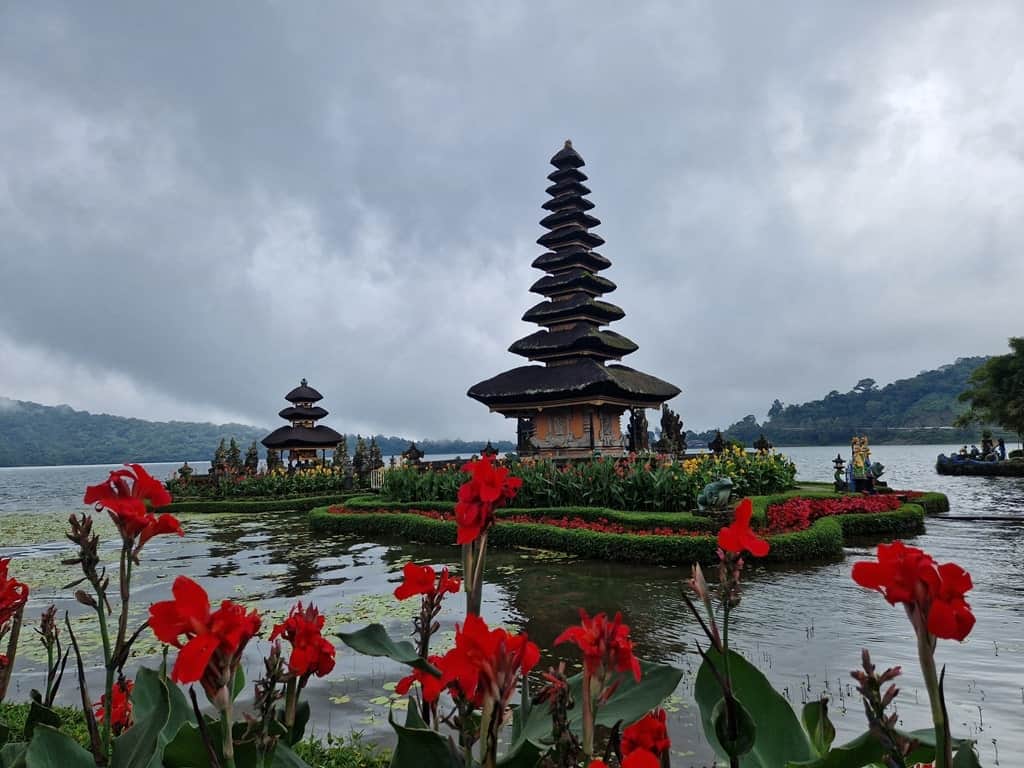
Another of Bali’s water temples, Pura Ulun Danu Bratan, lies on the shores and within Lake Bratan. This famed sacred spot is known for the 11-story thatched meru (dedicated to Shiva and his consort Pravathi) that rises out of the glassy waters of the lake — a sight that’s so iconic, not just to Bali but Indonesia as a whole, that it appears on the 50 rupiah note.
Interestingly, a statue of the Buddha is also enshrined at Pura Ulun Danu Bratan, which is unique given the Hindu heritage of the temple complex.
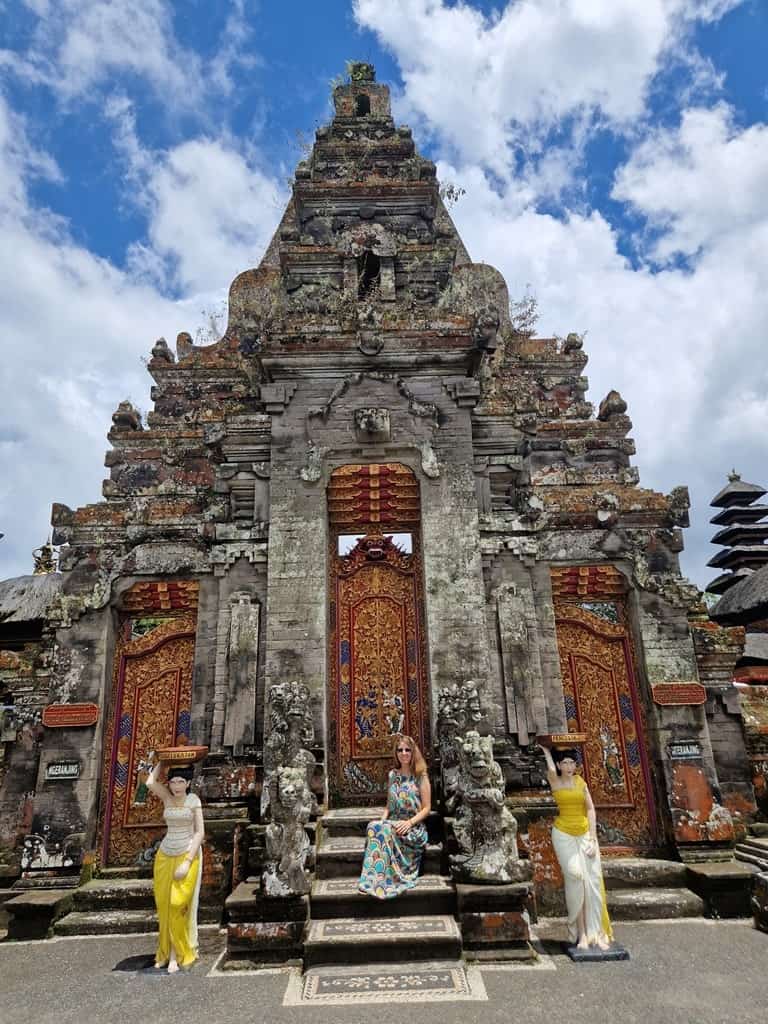
This temple was built in 1633 and is dedicated to the goddess of water, lakes, and rivers, Dewi Danu. The lake itself is very important as a source of irrigation for the center of Bali, helping to feed rice paddies and towns further downstream.
Because of this, there are many pilgrimages to the temple and many ceremonies that occur here in order to pray for the continued supply of water to the farmers of Bali through the UNESCO-recognised subak system. Part of the ritual involves priests and farmers taking water from the lake to sprinkle on their own land and pouring the remaining water into the irrigation system to help benefit others.
Pura Taman Ayun
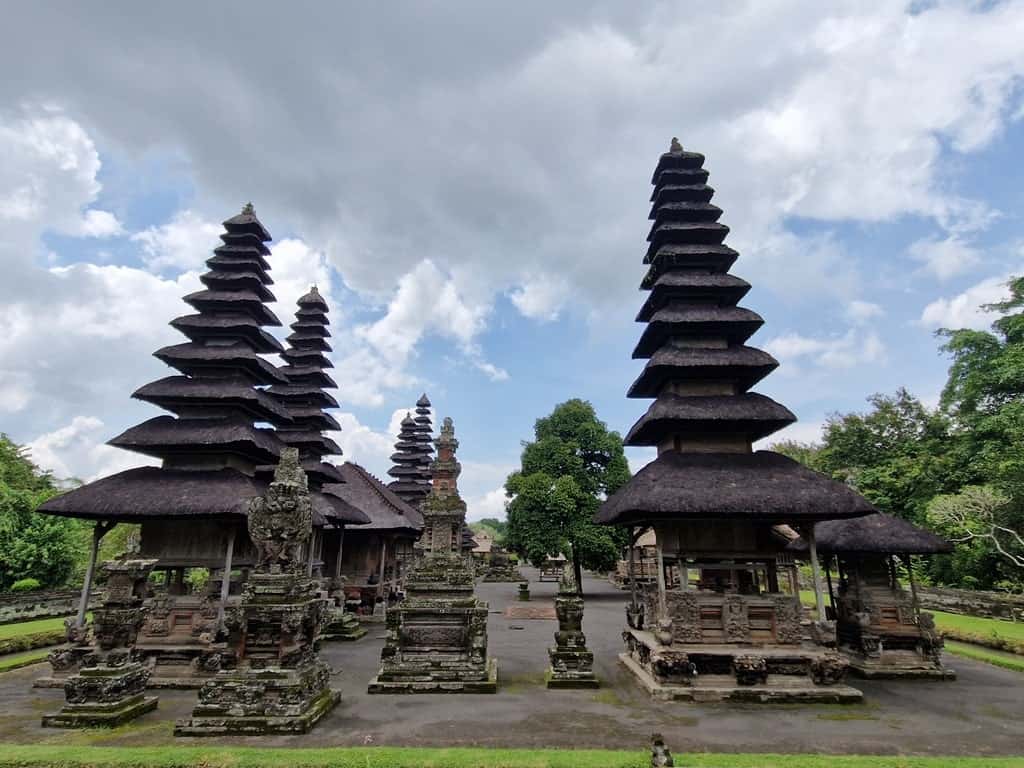
Pura Taman Ayun was once the main place of worship on the island of Bali during the reign of the Mengwi dynasty, which lasted until 1891. The temple itself was built in 1634 but was renovated extensively in 1937.
The sizeable compound is a veritable garden. Made up of large courtyards and grassy expanses and surrounded by a picturesque moat, it’s dotted with myriad multi-tiered meru shrines, making for an idyllic, otherworldly place to wander.
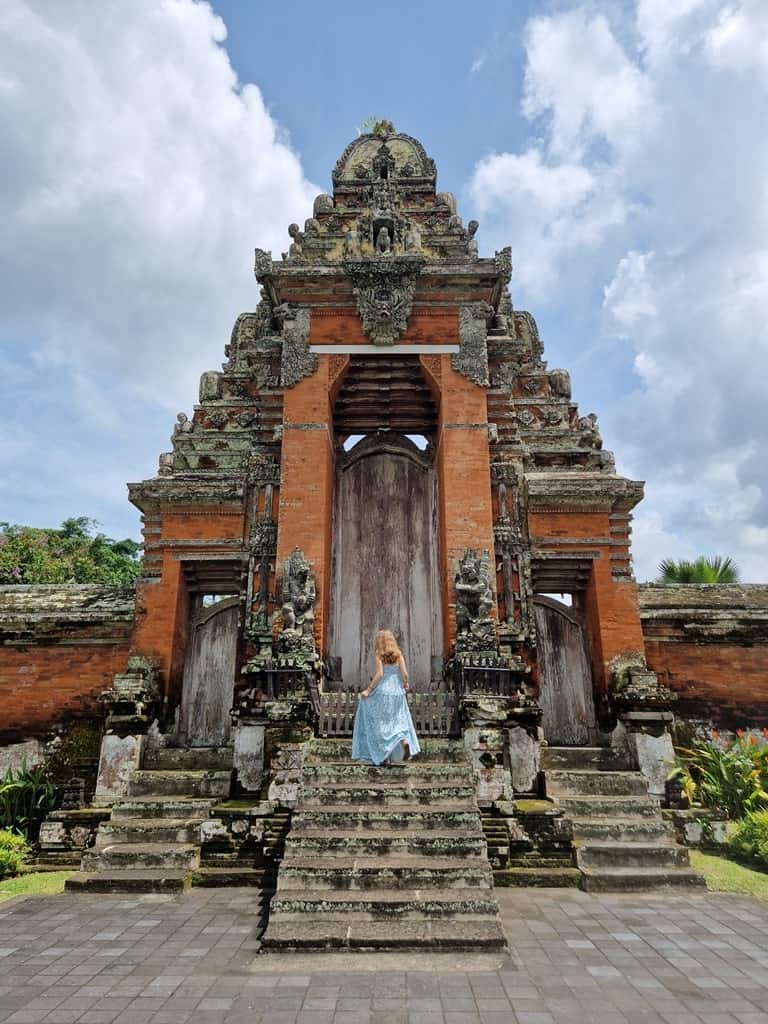
The grounds are beautifully tended and feature lawns, flowing fountains, and lotus-filled pools, as well as flowerbeds. It’s no surprise, then, that the temple comprises part of Bali’s subak system.
Its garden credentials were underlined when it was visited by famous British gardener Monty Don in the BBC series Around the World in 80 Gardens. But the temple has long been known for its beauty and has been used as the site for royal feasts in the past.
Pura Tanah Lot
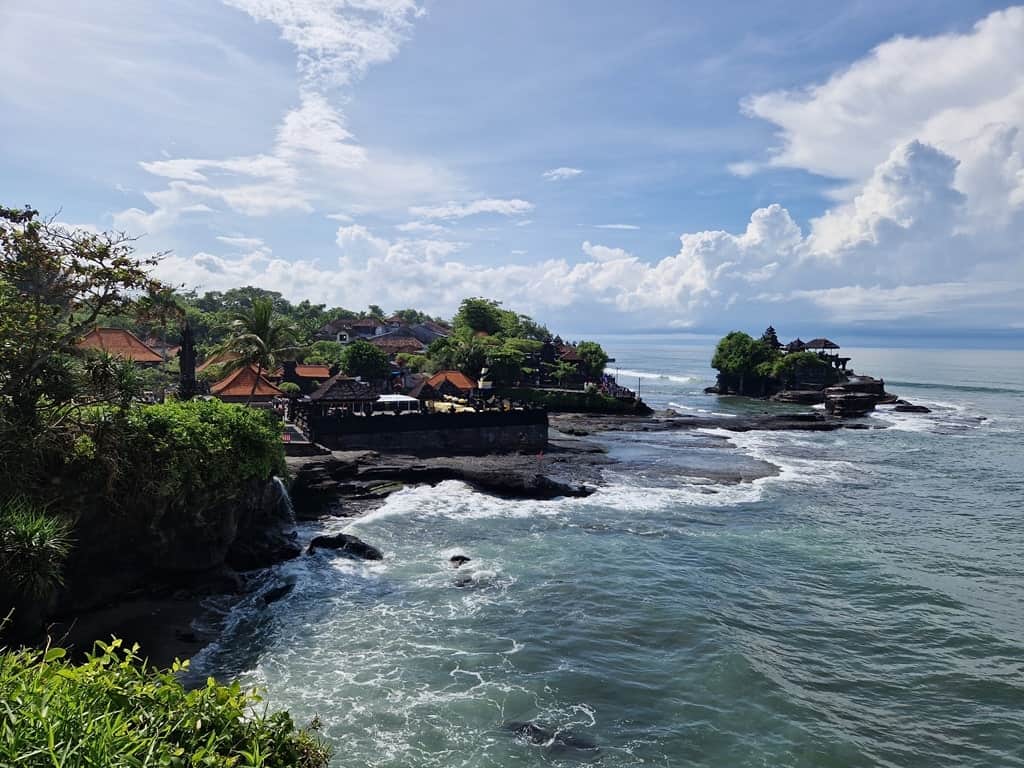
This may not be one of the holiest temples in Balinese Hinduism, but for visitors to the island, it’s one of the first that comes to mind when you think of Balinese temples. That’s possible because of its location: Tanah Lot is built on a rocky outcrop just off the coast near the southern Bukit Peninsula.
This is the most visited and most photographed of all the shrines in Bali, and so this tourist clamor can often overshadow its religious importance. But Pura Tanah Lot still holds great importance as one of the chains of pura segara, the sea temples that form a protective spiritual chain around the island. From here, it’s (usually) possible to catch a glimpse of the clifftop Pura Uluwatu in the distance to the south.
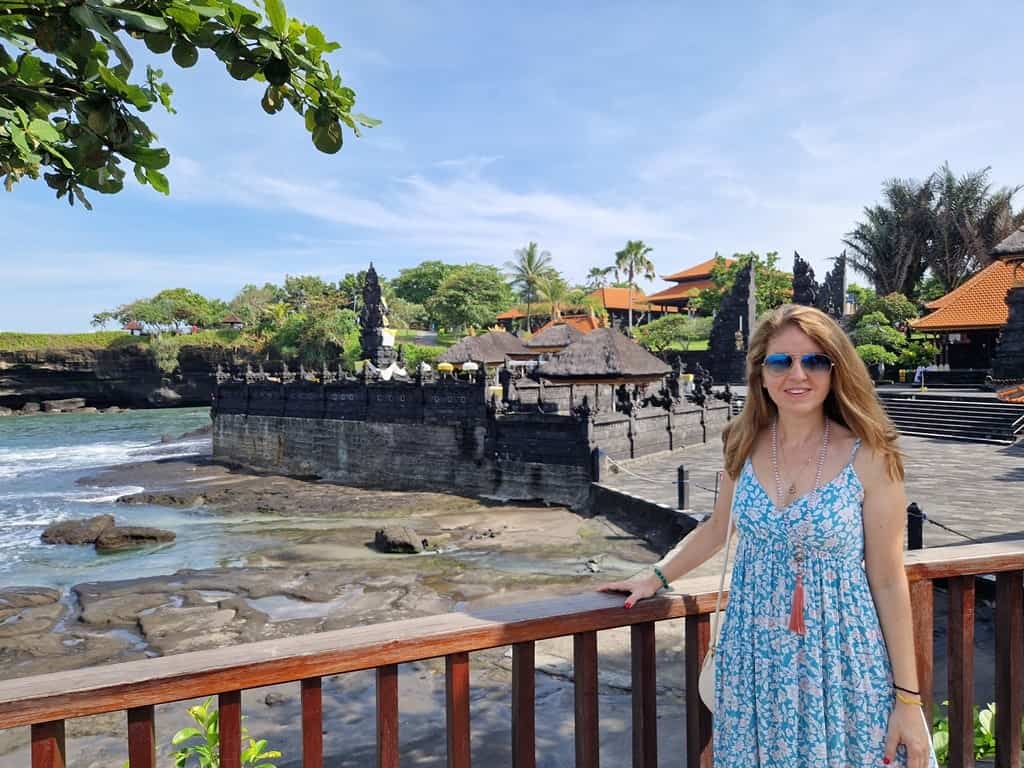
It’s said that the temple was built in the 16th century, but it has been part of Balinese myth and legend for centuries. For one thing, it’s believed that venomous sea snakes guard the temple against any evil intruders.
Pura Pusering Jagat
Situated just off the main road near the village of Pejeng, Pura Pusering Jagat translates to “Temple of the Navel of the World” and is often cited as one of the Sad Kahyangan Jagat — the six holiest places of worship on Bali. The focus point inside the sacred compound, which dates back to 1329, is a giant stone urn.
This monument has been carved with images from Hindu myth, specifically depicting the Churning of the Sea of Milk. The legend, taken from Mahabharata, tells the tale of demons and gods fighting over the elixir of eternal life. Although the figures are worn, it’s possible to still work out the various deities that have been carved here into a single block of sandstone.
The temple, also known as Pura Puser Tasik, also draws young Balinese couples — often newlyweds — who come here to pray for fertility at the phallic lingam stone (for men) and the female yoni stone.
